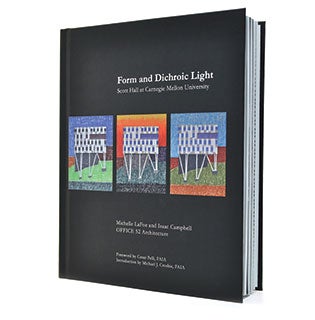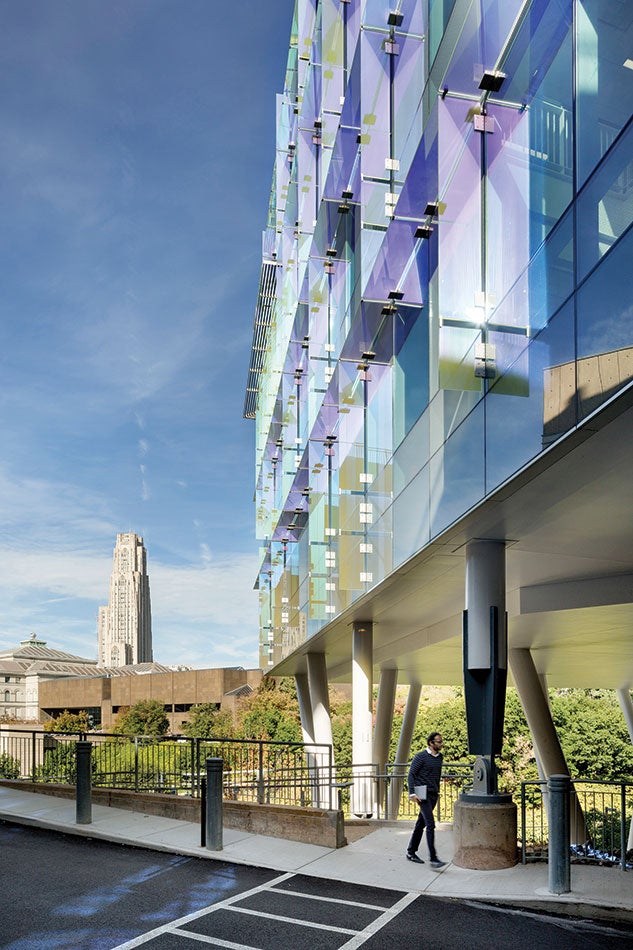
Good Form
Form and Dichroic Light: Scott Hall at Carnegie Mellon University by Michelle LaFoe ’89 and Isaac Campbell ’89 (Leete’s Island Books, 2018)
When a prestigious design competition pitted their startup architecture firm against some of the biggest names in the field, Michelle LaFoe ’89 and Isaac Campbell ’89 found a way to set themselves apart: They threw out the rules. Campbell and LaFoe had only recently opened their Portland studio, OFFICE 52 Architecture, when they entered the 2011 competition to design an $82 million nanoscience, bioscience and energy technologies building at Carnegie Mellon University. Winning would have been a coup for any small firm — even more so during the building industry’s postrecession downturn. But the couple, who met at Rice, saw their youth and size as an asset that made them nimbler than the big firms.

“The postrecession has allowed firms like ours to emerge and be competitive on a national scale,” Campbell told The Oregonian in 2013. “Why? We’re retooling and rethinking how we work. We may be smaller, but we also have the freedom to be more selective.”
It also gave them the boldness to take big risks. Although the competition called for a seven-story tower, Campbell and LaFoe “questioned how the problem was conceptually framed,” writes Michael J. Crosbie, former chair of the University of Hartford’s architecture department, in his introduction to LaFoe and Campbell’s informative book detailing the Scott Hall architectural process and product.

Instead — at the risk of disqualifying their entry — they proposed building much of the science center underground, topped with a state-of-the-art green roof and a crystalline pavilion that leads into a light-filled atrium. Using dichroic glass, the designers created subtle variations of color and light that change throughout the day. The risk paid off. Scott Hall was officially complete in 2017 and stands, says Crosbie, as “a model for design exploration that focuses like a laser on the nature of the problem.”
— Jennifer Latson
